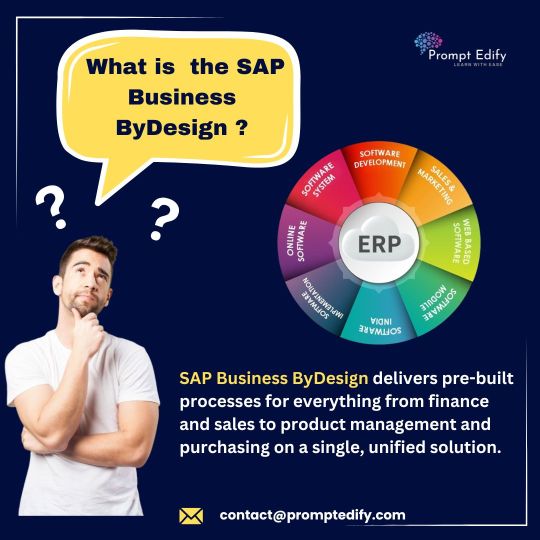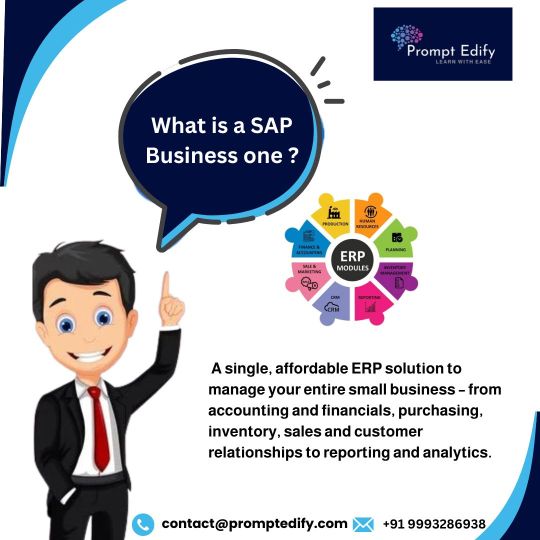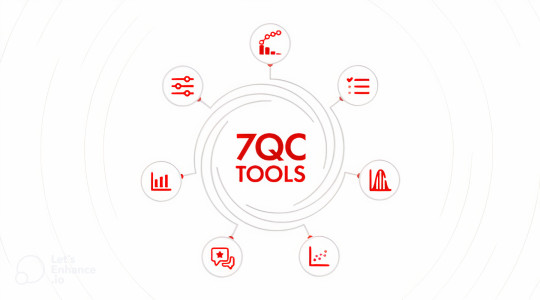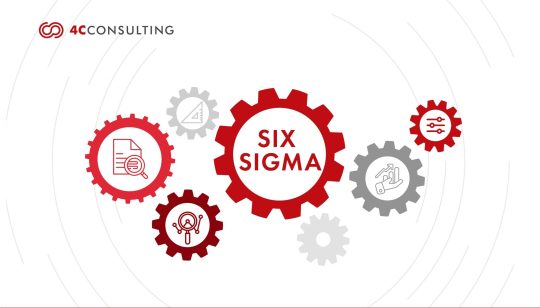#consulting certifications
Photo

Application of AI in Healthcare Industry - Nolij Consulting
Play #ArtificialIntelligence Jeopardy!! This is the first of 3 questions we will post over the next 2 weeks. Post your answer in the comment section. Get all 3 answers correct and win a surprise prize. Good luck!
#nolijconsulting #quizcontest #artificialintelligencetechnology #aicontest #participateandwin #quiztime #quizoftheday #quizgame #quizzone #artificialIntelligenceappreciationday
Learn more about QA and Testing Healthcare IT: https://nolijconsulting.com/
#robotics #automation #machineLearning #RPA #AI #techinnovation #ArtificialIntelligence #digitaltransformation #cybersecuritysolutions #technology #innovation
#dod ehr modernization project services#mhs genesis ehr services usa#ehr modernization#Department of Defense#Robotic Process Automation (RPA)#emerging technology solutions in healthcare#qa software testing#AI and machine learning#enterprise architecture#develop predictive model using nlp#Cerner ehr#consulting certifications#Cerner Workflow Alignment#innovative it solutions
0 notes
Note
Kon's kid absolutely has to be taller than Tim. Bernard's daughter should be, too, tbh, but at least Kon's daughter.
Currently both kids are only 8 and 4 years old so they're not taller then Tim yet but once they hit that first growth spurt - speaking of the poll for their names ended so here they both are


#ask#anon#dc#dc comics#batman#tim drake#babybat jason au#yepp martha and Janet won#which honestly was quiet surprised at#its funny tho#gives very#tim went rouge with the birth certificates#and chose the names without really consulting Bernard or kon
622 notes
·
View notes
Text
yukiKOOOOOOOOO!! god rank 2. i want that job licence for you so much, i want you to find your agency and independence so fucking bad i’m sorry you’re in persona 4
#i want her learn a trade#i want her to gain experience as a farmhand through connections to the inns produce suppliers#i want her to take a certification course#i want her to get a heavy vehichles license#i want her to take some college courses on the side of a part time job#i want her to travel japan as managerial consultant for other ryokan#i want her to join the fucking circus why not#i want her to study overseas#girl. i’m so sorry you’re in persona 4#rambles#p4g posting
22 notes
·
View notes
Text
WHY DO WE NEED ISO 9001 CERTIFICATION (QUALITY MANAGEMENT SYSTEM)?
ISO 9001 is a standard that is recognized worldwide, we can say that ISO 9001 certification is quite a famous standard and organizations try to achieve ISO 9001 certificate to join in the race for a globally competitive market.
If your organization achieves an ISO 9001 quality management system certificate, then it is like demonstrating your commitment to envisioning a quality culture.
By implementing an ISO 9001 standard in organizations, we can have better-organized process control and transparency in all departments.
Quality is a culture that must be developed and not a product that can be bought, since with the help of the guidelines of this international standard, organizations can learn the objective of developing quality as a culture.
3 notes
·
View notes
Text
that pause is deafening... (x)
Heather Herbert asks Sky News presenter, “when was the last time you had to show your birth certificate when you went to the toilet?”
#uk politics#transphobia in the uk is so ridiculous that transphobes dont event know the function of what they're trying to squash#a GRC generally speaking has little to no effect on the day to day lives of trans people#which is why there was a consultation to make the application process less cumbersome#as most trans folk I know dont see it as worth all the time and money#but suddenly its become something bigger than itself#because transphobes misunderstand the purpose of a GRC and think its like a police badge for bathroom use or something#its not. its literally just an update to your birth certificate. your passport and driving license etc can already be updated without one#and you dont need ANY id to use bathrooms anyway lmfao
23 notes
·
View notes
Text

Comprehensive SAP Business ByDesign Training: Join Prompt Edify's dynamic training program in Mozambique, designed to equip professionals with the essential skills to leverage SAP Business ByDesign effectively.
Expert-Led Sessions: Learn from seasoned instructors who bring real-world experience and in-depth knowledge to every session, ensuring you grasp the intricacies of SAP's powerful business management solution.
Tailored Curriculum: Our training is structured to meet the diverse needs of learners, covering everything from core functionalities to advanced features, ensuring you gain a holistic understanding of SAP Business ByDesign.
Hands-On Learning: Dive into practical exercises and simulations that replicate real-world scenarios, allowing you to apply theoretical concepts directly to your business environment.
Interactive Learning Environment: Engage in collaborative discussions, Q&A sessions, and group activities that foster a dynamic learning atmosphere, enabling you to learn from peers and industry experts alike.
Flexible Training Options: Choose from flexible training schedules to accommodate your busy lifestyle or organizational requirements, whether you prefer weekday classes or weekend sessions.
Certification Preparation: Prepare for SAP Business ByDesign certification exams with confidence, as our training program aligns with industry standards and equips you with the knowledge needed to excel.
Career Advancement Opportunities: Enhance your professional profile and career prospects with SAP Business ByDesign certification, demonstrating your expertise and proficiency in one of the leading ERP solutions.
Convenient Location: Located in Mozambique, our training center offers a convenient location for professionals across the region, minimizing travel time and maximizing learning efficiency.
Unlock Business Potential: Gain the skills and insights needed to unlock the full potential of SAP Business ByDesign, empowering your organization to streamline operations, drive growth, and stay competitive in today's dynamic market.
Enroll in SAP Business ByDesign training at Prompt Edify in Mozambique today and take the first step towards mastering this transformative business solution!
📱 (+91) 99932 86938
📧 [email protected]
🌐 www.promptedify.com
🔗 You can chat with us on WhatsApp
📑 Book your spot now👉 Register Now
#sap certification#sap online training#sap modules#sap course#sap_certification#sapconsultant#sap consulting services#career in sap
2 notes
·
View notes
Text
https://ayurvedaacharya.com/
#ayurvedic lifestyle consultant certification online#ayurvedic lifestyle consultant course#ayurveda immunology class online#clinical immunology course in ayurveda#certificate course in ayurvedic cosmetology#cosmetology courses in ayurveda
2 notes
·
View notes
Text
Weekly Astrology December 18-24
WHERE IS THE MOON?
The Moon is in mutable water sign PISCES and making every aspect she can for the next two days. Interacting with positive aspects to Jupiter, Mercury, Venus, and Uranus, but hard aspects to Mars by square and Neptune by soft conjunction and square the Sun and finally sextile Pluto up until December 19 at 4:03 pm EST when she goes Void of Course.December 17 and 18 are the best…

View On WordPress
#Astrology psychic Tarot card reader Tara Greene#astrology workshops Tara Greene Toronto#Billie Eilish#Brad Pitt#Canada&039;s 1 Psychic Voted and Certified Psychic#Christmas#corporate astrology Tarot consultant Tara Greene#Gift certificates for astrology lovers#Mercury Trine Jupiter#Tara Greene women&039;s spirituality workshops#Toronto&039;s best Tarot reader#weekly astrology#Yule
2 notes
·
View notes
Text
FSC Certification in Developing Countries: Empowering Local Communities

The forests are the most treasured assets of the planet, and contribute to the biodiversity of our planet, clean air, and climate control. In countries that are developing, the natural wonders of nature typically play a vital role in providing sources of income and resources for communities living in the area. However, the misuse of forests that are not properly managed, and sustainable practices could cause environmental damage and financial instability.
Here is the point where FSC Certification comes in, not only to help protect our forests but also help local communities in emerging nations.
Importance of FSC Certification
It is the FSC Certification is a worldwide-acknowledged quality standard for sustainable and responsible forest practices. It establishes rigorous standards for managing forests, making sure that social, environmental and economic considerations are and integrated. Although FSC certification is typically associated with developed countries, but its impact on developing nations is just as important and, in some cases, even more.
Preserving Biodiversity
Forests in developing nations are usually filled with biodiversity, and are home to rare and endangered species. FSC Certification puts a heavy importance on the conservation of these vital ecosystems. By following FSC standards, local communities are able to conserve their native flora as well as fauna, while preserving biodiversity for the next generation. This does not only protect the environment but also assists in the growth of ecotourism, which could bring additional income to the local community.
Economic Opportunities for Local Communities
In many developing nations forest-related activities are the foundation of local economy. FSC certification supports sustainable harvesting practices that help to ensure long-term health of the forest, and ensures an economic stability for the communities. Through the application of Forest Stewardship Council Certification guidelines local communities are able to maintain an income stream that is constant which reduces their exposure to changes in the global market. This helps alleviate poverty, but also increases living standards of people in the community.
Community Ownership and Management
One of the fundamental tenets that underpins FSC Certification is participation of the community and ownership of forest operations. The certification gives local communities control over how they manage their forest, which gives them the sense of ownership and accountability. Through active participation in the decision-making process, communities can safeguard their rights and ensure that their resources are being used sustainably. FSC certification gives communities the ability to benefit of their forest resources, which puts them in charge of their future.
Education and Capacity Building
FSC Certification is a way to promote educational and capacity-building programs in the local community. The programs are designed to equip members of communities with the skills and knowledge required to implement sustainable forestry practices efficiently. The training in areas like conservation, forest management and business development enables individuals to be in control of their resources and the future of their communities. As they gain more knowledge regarding sustainable methods, they will be able to make educated decisions that have a positive impact on the environment and their personal health and well-being.
Market Access and Premium Prices
FSC-certified products typically fetch high prices on international markets. This creates a powerful incentive for communities in the developing world to invest in forestry that is sustainable practices. If they follow FSC Certification Consulting ideas, they have access to market segments that are based on sustainability. This can dramatically increase their earnings. The ability to charge more for their goods will not only boost the local economy, but also rewards the ongoing adherence to ethical methods.
Case Studies: Success Stories
A number of success stories from developing nations illustrate the transformational effect on the world by FSC accreditation on communities in the local.
For instance, Brazilian nuts harvesters who live within the heart of Amazon rainforest have accepted FSC standards, ensuring their livelihoods as well as the ecosystem. Through implementing sustainable methods of harvesting and actively assisting in the management of their resources, they've ensured their future economic security while also ensuring the sustainability for one of our largest ecosystems.
Within Africa, FSC has allowed local communities to effectively manage and harvest wood resources. By adopting responsible practices, they are able to preserve their natural resources and boost economic development. This way, FSC certification offers a win-win situation that benefits both the environment and the local community.
Challenges and Future Directions
Although FSC certification has led to positive developments, but it's not without difficulties. In some countries in the developing world in particular, the limited resources, a lack of understanding and bureaucratic barriers could hinder the application and implementation of FSC Certification Services for FSC standards.
But, many organizations, governments as well as NGOs are becoming aware of the importance of FSC certification and making efforts to overcome these issues. They're offering support and resources to assist communities to navigate this certification procedure and gain the advantages.
In the near future, the growth of FSC to developing countries is a great opportunity. If more and more local communities embrace sustainable forest practices and practices, the positive effects on their environment as well as their socio-economic circumstances will continue to increase. International collaboration and investments in capacity-building initiatives can help local communities be stewards of their forests and facilitators of positive change.
Conclusion
FSC Certification isn't only about protecting the environment, it's about helping communities in the developing world. It is a sustainable route for communities to safeguard its natural assets, develop opportunities for economic growth, and take greater control over their lives. If they follow FSC standards and practices, communities can safeguard their future and protect forest resources that are vital to their wellbeing.
The successes of communities certified by FSC in the developing world are a testimony to the efficacy of this international standard in encouraging responsible forestry practices and strengthening them all over the world.
#FSC Certification in UAE#Forest Stewardship Council Certification#FSC Certification Consulting#FSC Certification Services
2 notes
·
View notes
Text
How to apply for ISO 9001 Certification in Canada

How to apply for ISO 9001 Certification in Canada
How does ISO 9001 Certification work?
There are four stages in the ISO 9001 audit process:
Pre-assessment meeting and audit preparation
Conducting the ISO 9001 Certification Audit
Meeting to discuss assessment results
Re-certification preparations
Certification Consultants in Canada
To implement ISO 9001 Certification in Canada, organizations need a process-oriented quality management system tailored to their specific requirements. ISO 9001 certification in Canada can improve communication, reduce costs, optimize processes, and more for your organization.
ISO 9001 Certification in Canada Requirements
When a company achieves ISO 9001 certification in Canada, they are expected to have established quality policies, processes, responsibility assignments, roles, and responsibilities. An International Organization for Standardization quality management system procedures are covered by ISO 9001 certification in Canada. Certification bodies also conduct ISO audits to ensure that companies comply with ISO standards. ISO 45001 certification in Canada
According to ISO, an ISO-approved auditor creates, implements, and audits a quality management system (QMS) as part of ISO 9001 certification. Getting ISO 9001 certification in Canada may require a lot of paperwork, and an auditor may make suggestions. The documentation for ISO audits should be in place for organizations ready to implement ISO 9001 in Canada.
ISO 9001 Certification in Canada Audits Online
Using an online web testing platform, IAS conducts ISO 9001 certification audits. Behind the audit, IAS issued a certificate proving your company has been certified to ISO 9001 in Canada based on several criteria, including the online test scenarios for your system documentation, the testing of all policies, and other related ISO 9001 certification procedures. You can implement ISO 9001 in Canada much more quickly with remote audits from IAS. ISO Certification Bodies in Canada
ISO 9001 Certification in Canada available ?
Any organization can achieve ISO 9001 certification in Canada, regardless of its size, type, or field of operation, if they want to improve their QMS performance systematically. Several businesses in Canada can obtain ISO 9001 certification, including:
Corporate Institutions
Construction Companies
Production/Manufacturing Companies
Hospitals
Banks
Institutions of higher learning
Governmental Organizations
For more information visit: ISO certification in Canada
3 notes
·
View notes
Text
#education#education and learning#education news#education consultancy services#courses#degree certificate attestation#bachelors degree
4 notes
·
View notes
Text
Learn what are the Five ISO 27001 implementation consulting certifications you need to become an information security management system professional. Read now! https://quality-assurance.com.au/blog/what-is-the-role-of-the-iso-27001-implementation-consulting-certification/
2 notes
·
View notes
Text

Overview:
SAP Business One (SAP B1) implemented at Prompt Edify, Rwanda, serves as an integrated enterprise resource planning (ERP) solution tailored for small and medium-sized enterprises (SMEs).
Streamlined Operations:
Facilitates seamless management of core business functions including accounting, sales, purchasing, inventory, and production, enhancing operational efficiency.
Localized Adaptation:
Customized to meet specific business requirements and comply with Rwandan regulatory standards, ensuring legal and financial compliance.
Enhanced Financial Management:
Enables accurate financial reporting, budgeting, and forecasting, empowering Prompt Edify with insightful decision-making capabilities.
Inventory Optimization:
Provides real-time visibility into inventory levels, facilitating better inventory control, reducing stockouts, and optimizing procurement processes.
Streamlined Sales Process:
Automates sales processes from lead generation to order fulfillment, improving customer satisfaction and sales performance.
Improved Customer Relationship Management (CRM):
Centralizes customer data, enabling Prompt Edify to deliver personalized experiences, strengthen customer relationships, and drive loyalty.
Data-driven Insights:
Generates comprehensive reports and analytics, empowering Prompt Edify with actionable insights to identify trends, opportunities, and challenges.
Scalability and Growth:
Supports business expansion by offering scalability, flexibility, and easy integration with other systems as Prompt Edify grows and diversifies its operations.
User-friendly Interface:
Intuitive interface and user-friendly features enhance employee productivity, reducing training time and ensuring rapid adoption across the organization.
Tech Support and Maintenance:
Access to ongoing technical support and maintenance services ensures smooth operation and timely resolution of any issues, minimizing downtime.
Long-term Value:
Investment in SAP Business One offers Prompt Edify long-term value through increased operational efficiency, cost savings, and sustained growth in the dynamic Rwandan market.
Implementing SAP Business One at Prompt Edify underscores a strategic commitment to leveraging advanced technology to drive innovation, efficiency, and competitiveness in Rwanda's business landscape.
📱 (+91) 99932 86938
📧 [email protected]
🌐 www.promptedify.com
🔗 You can chat with us on WhatsApp
📑 Book you spot now👉 Register Now
#sap certification#sapconsultant#sap consulting services#sap online training#sap fico course#sap modules#sap_certification#career in sap#sap business one
2 notes
·
View notes
Text
https://fusioncomplianceservices.com/service/bis-crs-certification/
BIS Certificate Consultants: Elevate your products with BIS certification expertise. Our consultants streamline the process, ensuring compliance with quality standards, opening doors to the Indian market's vast potential.
FMCS Certificate: Obtain Factory Mutual Certification Services (FMCS) to bolster safety and resilience. Trust us to guide you through FMCS requirements, fortifying your business against risks.
CRS Certificate: Navigate the complex world of BIS Conformity Requirement Scheme (CRS) certification effortlessly. We specialize in simplifying compliance, enabling you to thrive in India's demanding market landscape.
#bis certificate#fmcs certificate#tec certificate#bis crs certificate#bis certificate in india#bis certification consultants#what is bis certificate#isi certificate#bis certificate documents#certificate#what is bis certificate in india#iso certificate#stqc certificate#bis certificate apply online#bis certificate cost#bis certificate process#bis licence consultants#how to apply bis certificate#how to apply for bis certificate#bis registration certificate
2 notes
·
View notes
Text
7 QUALITY CONTROL TOOLS FOR PROCESS IMPROVEMENT

“As much as 95 per cent of all quality-related problems in the factory can be solved with seven fundamental quantitative tools.”
-Kaoru Ishikawa, The inventor of Fishbone Diagram
In today’s customer-centric market, quality is an integral factor in the growth and sustainability of any business. Businesses go the extra mile to provide the best and excellent customer experience to ensure customer satisfaction. Hence, efficient quality management which has the highest impact on customer experience is one of the most essential features for any business.
Introduced by Kaoru Ishikawa, the seven basic tools of quality also known as 7QC tools are very effective in quality management and quality assurance process. So, businesses who want to ensure competitive and excellent quality of their products and services can utilize the proven 7QC tools for structuring a strategic plan for quality improvement.
LIST OF 7 QC TOOLS
Cause and Effect Diagram
Cause and Effect Diagram also known as Fishbone Diagram helps in identifying the potential causes of an effect or a problem. In addition to sorting ideas in respective categories, it also helps in understanding the areas of opportunity through effective brainstorming. Fishbone training empowers you to identify the potential cause in the problem.
Control Chart
Control charts are used to study how the processes have changed over a period of time. Further, by comparing current data to historical control limits, one could lead to the conclusion about whether the process variation is consistent as in under control or unpredictable as in out of the control due to being affected by special causes of variation.
Pareto Chart
Pareto Chart is based on the 80/20 rule where it shows the significant factors that have the highest impact on the identified problem.
Check Sheet
Check sheet is a structured process which helps to collect and analyzing data. It is an effective tool that can be for a variety of purposes.
Histogram
Histogram is commonly used a graph that shows the data and its frequency of distribution to help users identify each different value in a set of data occurs.
Scatter Diagram
Scatter diagram shows the relationship between two important factors i.e. pairs of numerical data, one variable on each axis to demonstrate the relationship.
Stratification
Stratification also known as a flow chart or run chart is a technique that separates the data gathered from a variety of sources so that patterns can be seen i.e., the path an entity has taken through a defined process.
Utilizing the 7 QC tools in six sigma or quality management process helps in taking a systematic approach to identify and understand the risk, assess the risk, control fluctuation of product quality and accordingly provide solutions to avoid future defects.
WHEN SHOULD YOU USE 7 QC TOOLS?
7 QC tools can be carried out during the quality management, quality improvement process, six sigma implementation processes or even the regular PDCA cycle for the quality purpose for enhanced quality management.
In the first phase of measuring and identifying, Fishbone Diagram also known as cause and effect diagram, Pareto Chart and Control Chart can be utilized. In the next phases of assessment and analysis, Scatter Diagram, Histogram and Checklist can be carried out. The Control Chart can be utilized consistent quality improvement.
BENEFITS OF 7 QC TOOLS
The 7 QC tools are structured and fundamental instruments that help businesses improve their management and production process for achieving enhanced product quality.
From assessing and examining the production process, identification of key challenges and problems to controlling the fluctuation present in the product quality and providing solutions for prevention of defects in future, the easy to understand and implement, 7 QC tools are very effective. Some of the major business benefits of 7 QC tools are listed below.
Provides a more structured path for problem-solving and quality improvement
Easy to understand as well as implement yet extremely effective
A scientific and logical approach for problem-solving
Follows the 80/20 rule i.e. gain 80% result with 20% efforts
Improve the quality of product and services
Helps in identifying and analyzing problems during the process
Fishbone training aides in root cause analysis and problem-solving
Encourages team spirit and fosters a healthy culture
Identifies roots cause and solve it permanently
Enhance customer experience and customer satisfaction
Based on the data-driven process and customer-centric approach, 7 QC tools implementation is one of the most effective processes that too in the shortest amount of time.
4C team of certified professionals has provided 80+ implementation of 7 QC Tools and 120+ 7 QC Tools Training. By solving 200+ quality problems, 4C has empowered clients to reduce the 80% cost of poor quality. To accelerate your quality management process and reduce your cost of poor quality, contact our experts now.
#iso certification#iso certification consultants#iso consultancy#iso consultant#iso certificate online#iso certification in india
3 notes
·
View notes
Text
Six Sigma and Lean Six Sigma: Concepts, Methodology, and Benefits.

In the pursuit of operational excellence and continuous improvement, organizations have turned to methodologies such as Six Sigma and Lean Six Sigma. Six Sigma is a data-driven approach that aims to eliminate defects and reduce process variations, while Lean focuses on waste reduction and process optimization. Together, these methodologies form Lean Six Sigma, a powerful framework that combines the principles of statistical analysis, problem-solving, waste elimination, and continuous improvement. Lean Six Sigma has become a cornerstone for organizations seeking to enhance efficiency, quality, and customer satisfaction. By integrating these methodologies, businesses can streamline processes, drive cost savings, and gain a competitive advantage in today's competitive marketplace.
What is Six Sigma?
Six Sigma is a data-driven, structured approach for process improvement that originated at Motorola in the 1980s. It gained widespread recognition after General Electric (GE) successfully implemented the methodology, leading to significant cost savings and improved customer satisfaction. At its core, Six Sigma aims to achieve process efficiency and effectiveness by minimizing process variation and aligning outcomes with customer expectations.
The term "Six Sigma" refers to a statistical concept that measures process performance. It represents a level of quality where the number of defects is extremely low, allowing for only 3.4 defects per million opportunities. This stringent quality standard reflects a commitment to excellence and sets the bar for organizations aiming to deliver superior products and services consistently.
Six Sigma is not limited to manufacturing industries; its principles and techniques have been successfully applied in service organizations, healthcare, finance, and many other sectors. It provides a structured framework that empowers organizations to drive process improvement, increase customer satisfaction, reduce costs, and achieve operational excellence.
History and Evolution of Six Sigma
Six Sigma is a methodology for process improvement that has become widely recognized as a standard for quality management across many industries. It was first developed in the 1980s by Bill Smith, a senior engineer at Motorola, who was tasked with finding a way to reduce defects in their production processes.
The development of Six Sigma was influenced by several other quality management initiatives that came before it, including Total Quality Management (TQM) and Statistical Process Control (SPC). These initiatives emphasized the importance of process improvement and data-driven decision-making, which are also core principles of Six Sigma.
Motorola implemented Six Sigma in the late 1980s and early 1990s, and the results were impressive. They reported a reduction in defects of more than 99% and a cost savings of over $16 billion. As a result, other companies began to take notice of Six Sigma and its potential for improving business processes and reducing costs.
In the 1990s, Six Sigma gained widespread popularity, particularly in the manufacturing sector. General Electric (GE) was one of the early adopters of Six Sigma, and they made it a core part of their business strategy. Under the leadership of CEO Jack Welch, GE reported cost savings of over $10 billion as a result of Six Sigma.
Since then, Six Sigma has continued to evolve and expand beyond the manufacturing sector. It has been adopted by many other industries, including healthcare, finance, and service industries.
Understanding the DMAIC Process in Six Sigma
DMAIC is an acronym that stands for Define, Measure, Analyze, Improve, and Control. It represents the five phases of Six Sigma Methodology and typically makes up the process:
Define: In this phase, the project team defines the problem they are trying to solve and identifies the goals and objectives of the project. They also identify the key stakeholders like current and future customers and develop a project charter that outlines the scope and timeline of the project.
Measure: In this phase, the team collects data on the process they are trying to improve. They use this data to create a baseline measurement of the process and identify areas of variation that need to be addressed. Mapping of various processes, capability analysis and Pareto chart can be prepared to analyze the frequency of problems or its causes.
Analyze: In this phase, the team analyzes the data to identify the root cause of the problem to identify the errors. They use statistical tools and techniques like FMEA and Multi vari chart to identify patterns and trends in the data and develop hypotheses about the root cause of the problem.
Improve: In this phase, the team develops and implements solutions to address the root cause of the problem. They use data to test and refine their solutions, and they implement controls like Design of experiments (DOE) to solve problems from complex processes or systems where there are many factors influencing the outcome and where it is impossible to isolate one factor or variable from the others and Kaizen event to introduce rapid change by focusing on a narrow project and using the ideas and motivation of the people who do the work to ensure that the improvements are sustained over time.
Control: In this phase, the team monitors the process to ensure that the improvements are sustained. They also develop a control plan for ongoing monitoring and measurement (through various processes like – SPC for monitoring process behavior, 5S to create visual controls for workplace and Poka yoke for error proofing or immediately detect errors) to ensure that the process continues to meet the desired quality standards.
By following this structured approach, Six Sigma can help businesses improve their processes and reduce defects, which can lead to increased customer satisfaction, improved efficiency, and reduced costs.
Key Benefits and Advantages of Implementing Six Sigma
One of the key benefits of Six Sigma is that it provides a common language and methodology for process improvement across different departments and functions within an organization. This can help to break down silos and improve communication and collaboration across the organization. So in process improvement it offers several benefits like:
Increased efficiency and productivity which leads to cost saving and improved competitiveness.
Reduced defects: Cost saving by avoiding the costs associated with rework, scrap, and warranty claims.
Data-driven decision-making
Improved collaboration across different departments and functions within an organization.
Continuous improvement
Standardization
Competitive advantage
So overall, by focusing on process improvement and data-driven decision-making, Six Sigma can help businesses achieve significant improvements in efficiency, quality, and customer satisfaction.
What is Lean Six Sigma?
While Six Sigma focuses on reducing defects and process variations, Lean Manufacturing aims to eliminate waste and enhance efficiency. By combining the principles of Lean and Six Sigma, organizations can achieve a powerful methodology known as Lean Six Sigma.
Lean principles, derived from the Toyota Production System, emphasize the identification and elimination of waste in all its forms. Waste, or "muda" in Japanese, can take several forms, including overproduction, excess inventory, defects, waiting time, unnecessary transportation, over-processing, and unused employee skills. Lean Six Sigma utilizes various tools and techniques to identify and eliminate these wasteful activities, streamlining processes and reducing costs.
The integration of Lean and Six Sigma creates a synergistic effect, enabling organizations to optimize their processes and achieve sustainable improvements. Lean focuses on improving flow and minimizing non-value-added activities, while Six Sigma provides the statistical analysis and problem-solving capabilities to drive quality improvements.
Key concepts of Lean Six Sigma
Value: Lean Six Sigma revolves around delivering value to the customer. Value is defined as any action or process that directly contributes to meeting customer requirements and is something that customers are willing to pay for. The goal is to maximize value while minimizing waste.
Waste (Muda): Waste refers to any activity, process, or resource that does not add value to the customer. Lean Six Sigma identifies eight types of waste: overproduction, waiting, unnecessary transportation, excess inventory, over-processing, defects, unused employee creativity, and motion. Eliminating waste is a fundamental principle of Lean Six Sigma.
Flow: Flow refers to the smooth and uninterrupted movement of products, services, or information through a process or value stream. Lean Six Sigma aims to eliminate obstacles, delays, and disruptions in flow to improve overall process efficiency and reduce lead times.
Pull: The concept of pull focuses on producing or providing products or services based on actual customer demand rather than pushing them into the system based on forecasts or assumptions. Pull systems help reduce overproduction, minimize inventory, and enable a more responsive production process.
Standardization: Standardization involves creating consistent and repeatable processes, procedures, and work instructions. It ensures that best practices are established and followed consistently across the organization, reducing variations and improving quality.
Continuous Improvement: Continuous improvement is at the heart of Lean Six Sigma. It emphasizes the ongoing pursuit of small, incremental improvements in processes, products, and services. Through the use of tools like PDCA (Plan, Do, Check, Act) or DMAIC (Define, Measure, Analyze, Improve, Control), organizations can systematically identify and implement improvements.
Variation: Variation refers to the differences or deviations that occur in processes, outputs, or outcomes. Lean Six Sigma aims to reduce variation to achieve consistent and predictable results. Statistical tools and techniques are used to measure, analyze, and control process variations.
Root Cause Analysis: Identifying the root causes of problems or defects is crucial in Lean Six Sigma. By digging deep into the underlying causes, organizations can address the core issues and prevent their recurrence. Tools such as fishbone diagrams, 5 Whys, and cause-and-effect analysis are commonly used for root cause analysis.
Data-Driven Decision Making: Lean Six Sigma emphasizes making decisions based on objective data and analysis rather than relying on assumptions or opinions. Statistical analysis and data collection techniques are employed to measure process performance, identify trends, and make informed decisions for process improvement.
Teamwork and Employee Engagement: Lean Six Sigma recognizes the importance of involving employees at all levels in process improvement efforts. Cross-functional teams are often formed to work collaboratively, share knowledge, and generate innovative solutions. Employee engagement and empowerment foster a culture of continuous improvement and create a sense of ownership.
These concepts form the foundation of Lean Six Sigma and guide organizations in their pursuit of operational excellence, waste reduction, and quality improvement.
Future and Innovation in Six Sigma and Lean Six Sigma
Six Sigma and Lean Six Sigma has come a long way since its inception in the 1980s. Originally developed by Motorola, it has now become a widely accepted methodology for improving business processes across different industries. While the basic principles of Six Sigma remain the same, there are numerous future trends and innovations that can shape the future of Six Sigma like;
Integration with Artificial Intelligence (AI) and Machine Learning (ML)
Focus on Customer Experience
Emphasis on Sustainability: Organizations can use Six Sigma and Lean Six Sigma to identify and reduce their environmental impact, minimize waste, and improve their carbon footprint. This can not only benefit the environment but also help organizations reduce costs and improve their reputation.
Application in the service industry: The future of Six Sigma and Lean Six Sigma lies in its ability to adapt to the unique needs of different industries and help them achieve their specific goals.
Integration with Agile: Agile are popular approaches for project management and process improvement. Six Sigma can be integrated with these methodologies to create a hybrid approach that combines the best of both worlds.
Lean Six Sigma combines the power of Six Sigma and Lean methodologies to create a comprehensive approach for organizations to drive efficiency, reduce waste, and improve quality. Six Sigma focuses on data-driven decision making and problem-solving to reduce process variations and defects, while Lean aims to eliminate waste and streamline processes. By integrating these two methodologies, Lean Six Sigma enables organizations to achieve remarkable results in terms of operational excellence, cost reduction, and customer satisfaction. It provides a structured framework for continuous improvement, empowers employees to contribute to process optimization, and fosters a culture of excellence and innovation. With Lean Six Sigma, organizations can maximize their potential, achieve sustainable improvements, and gain a competitive edge in today's dynamic business environment.
#iso certification consultants#iso certification#iso training#iso consultancy#iso certificate online
3 notes
·
View notes